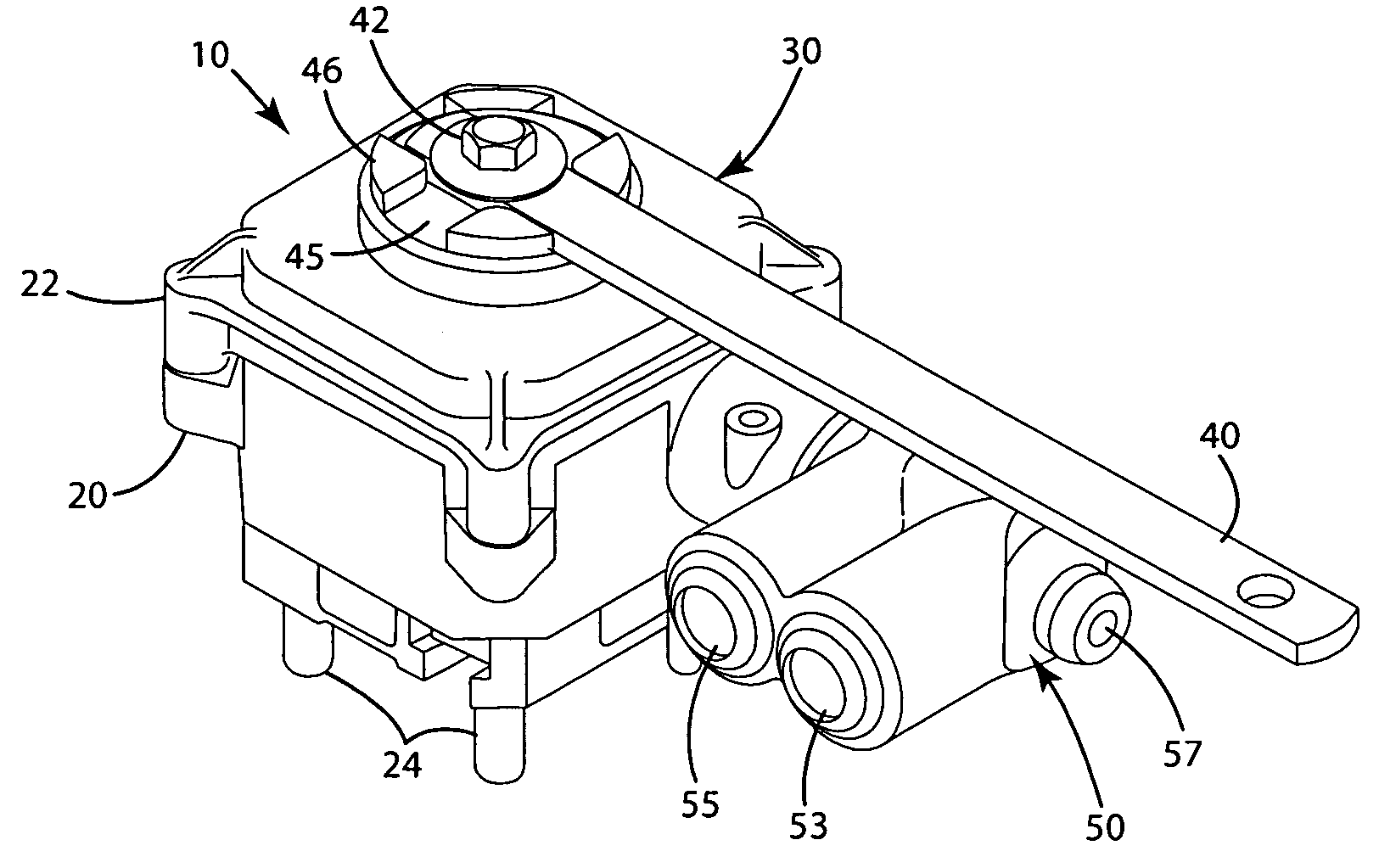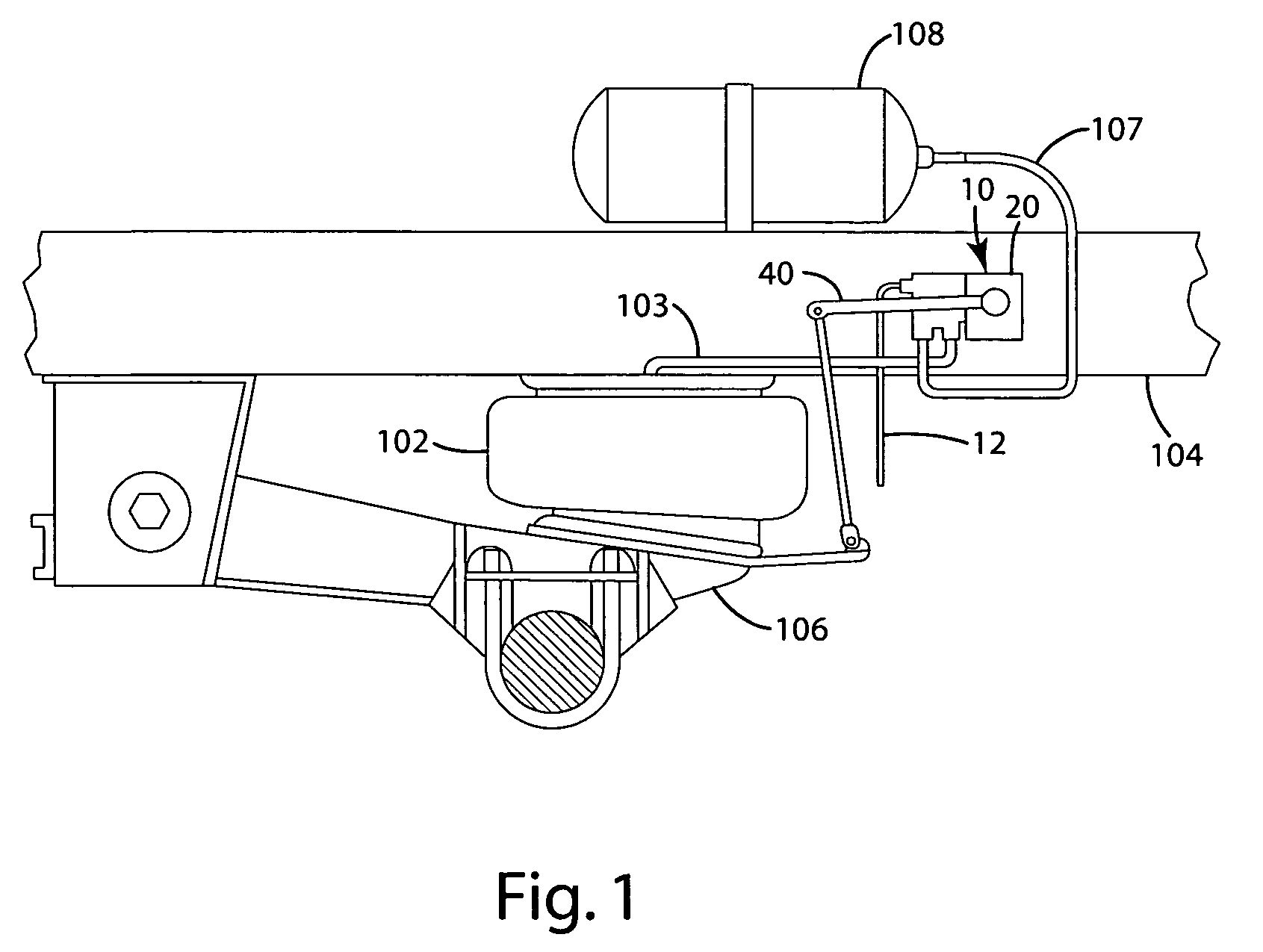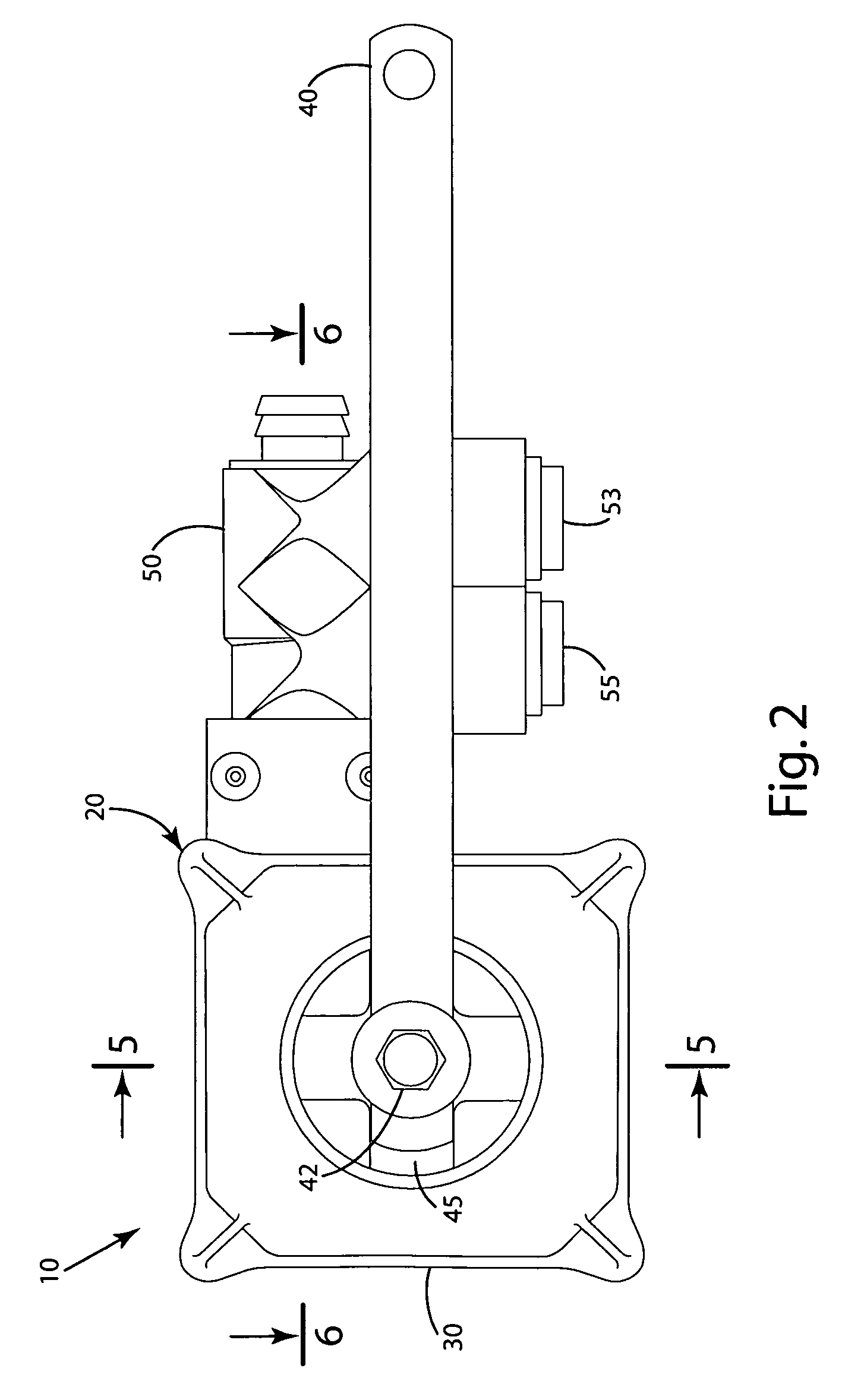Height control valve for vehicle leveling system
a technology of height control valve and vehicle suspension, which is applied in the direction of valve operating means/release devices, cycle equipment, instruments, etc., can solve the problems of affecting the handling of trailers, affecting the stability of trailers, and reducing the distance between the frame and the axle, so as to achieve accurate inflating and deflating of vehicle suspension elements, improve load stability, and simple and efficient
- Summary
- Abstract
- Description
- Claims
- Application Information
AI Technical Summary
Benefits of technology
Problems solved by technology
Method used
Image
Examples
Embodiment Construction
I. Overview
[0028]A ride height control valve constructed in accordance with an embodiment of the invention is illustrated in FIGS. 1-9 and generally designated 10. Generally, the height control valve 10 is described in connection with a leveling system where the valve functions to control the flow of air into and out of suspension elements 102, for example, an air spring associated with a vehicle, such as, a semi-tractor, a semi-trailer, a truck, an automobile or a tractor. The height control valve 10 is also well suited for use in a variety of other height control systems, such as a truck cab system that levels the truck cab with respect to a truck frame, controls the truck cab ride height, or controls the truck cab spacing.
[0029]The height control valve 10 generally includes a housing 20, a control unit 30 and a valve assembly 50, which act in concert to supply or exhaust fluids from the suspension elements or which remain closed so that the suspension elements maintain a static c...
PUM
 Login to View More
Login to View More Abstract
Description
Claims
Application Information
 Login to View More
Login to View More - R&D
- Intellectual Property
- Life Sciences
- Materials
- Tech Scout
- Unparalleled Data Quality
- Higher Quality Content
- 60% Fewer Hallucinations
Browse by: Latest US Patents, China's latest patents, Technical Efficacy Thesaurus, Application Domain, Technology Topic, Popular Technical Reports.
© 2025 PatSnap. All rights reserved.Legal|Privacy policy|Modern Slavery Act Transparency Statement|Sitemap|About US| Contact US: help@patsnap.com



